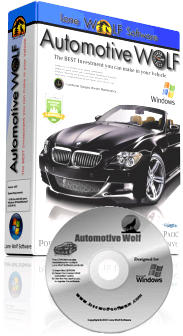|
Windows XP/7/8/10/11
|
 |
 No Risk 30 Day Free Trial |
HOME | INTRO | FEATURES | DOWNLOAD | PURCHASE | SCREEN SHOTS | REVIEWS | CAR CARE TIPS |
| Car Care Tips - Oil Changes |
| Car oil changes are
important for several reasons: 1. Lubrication: The primary function of engine oil is to lubricate the moving parts within the engine. It forms a protective barrier between metal surfaces, reducing friction and minimizing wear and tear. Regular oil changes ensure that the engine is properly lubricated, preventing excessive friction and extending the life of the engine components. 2. Heat Dissipation: Engine oil also helps to dissipate heat generated by the engine's internal combustion process. As the oil circulates through the engine, it absorbs heat and carries it away, preventing the engine from overheating. Fresh, clean oil is more effective at absorbing and dissipating heat compared to old, dirty oil. 3. Contaminant Removal: Over time, engine oil can become contaminated with dirt, debris, and combustion by-products. These contaminants can form sludge and deposits that can clog oil passages, restrict proper lubrication, and impair engine performance. Regular oil changes help remove these contaminants and maintain the cleanliness of the engine. 4. Corrosion Prevention: Engine oil contains additives that help protect engine components from corrosion and oxidation. These additives create a protective film on metal surfaces, preventing rust and corrosion. Fresh oil with the proper additives provides better protection against corrosion, which is essential for the longevity and reliability of the engine. 5. Engine Performance: Clean oil with the right viscosity ensures smooth engine operation and optimal performance. As oil ages, it can break down and lose its effectiveness, resulting in reduced engine performance, decreased fuel efficiency, and potential mechanical issues. Regular oil changes help maintain the engine's performance and fuel economy. 6. Warranty Compliance: If your vehicle is under warranty, following the manufacturer's recommended oil change intervals is often a requirement to keep the warranty valid. Failing to adhere to the recommended maintenance schedule, including oil changes, could void the warranty coverage. Overall, regular oil changes are vital for preserving the health and longevity of your engine, optimizing performance, preventing costly repairs, and maintaining the value of your vehicle. |
| How to Change Your Oil: 1. Follow the manufacturer's recommendations: Consult your car's owner's manual to determine the recommended oil change interval. Some vehicles require an oil change every 3,000 miles, while others can go longer between changes. Following the manufacturer's guidelines will ensure optimal performance and longevity for your engine. 2. Gather the necessary supplies: Before starting the oil change, make sure you have all the supplies you need, including the correct type and amount of oil, a new oil filter, a wrench or socket set to remove the oil drain plug, an oil filter wrench, a drain pan to collect the old oil, and gloves to protect your hands. 3. Prepare the vehicle: Park your car on a level surface and engage the parking brake. Warm up the engine for a few minutes to help the oil flow more easily when draining. However, be cautious not to burn yourself on hot engine components. 4. Locate the drain plug and oil filter: The drain plug is typically located on the bottom of the engine oil pan, while the oil filter is usually located on the side or bottom of the engine. Consult your owner's manual or a repair guide for the specific locations. 5. Drain the old oil: Position the drain pan beneath the drain plug, then use a wrench or socket set to loosen and remove the drain plug. Allow the old oil to drain completely into the pan. Once drained, replace the drain plug and tighten it securely. 6. Replace the oil filter: Use an oil filter wrench to loosen and remove the old oil filter. Before installing the new filter, apply a small amount of oil to the rubber gasket to ensure a proper seal. Then, hand-tighten the new filter until snug. 7. Add new oil: Locate the oil filler cap under the hood and remove it. Use a funnel to pour the recommended amount of new oil into the engine. Check the oil level using the dipstick and add more oil if necessary. Be careful not to overfill. 8. Dispose of the old oil properly: Used motor oil is considered hazardous waste, so it's crucial to dispose of it responsibly. Take it to a local recycling center or an auto parts store that accepts used oil for recycling. Remember, if you're unsure about any step or uncomfortable performing an oil change yourself, it's always best to consult a professional mechanic or take your vehicle to a trusted service center. |
| How to check the Oil in your
car: This is the most important under-hood check you can do. An engine cannot run without oil even for a minute without serious engine damage or total destruction! To check the oil level, find the engine oil dipstick and remove it. With a paper towel or rag, wipe off the end of the stick and notice the markings on it. You will usually see a mark for Full and another mark for Add. Check your owners manual to be sure. Push the stick back into the tube until it seats then immediately pull it out to see the oil level. You should not add oil unless the level is below the Add mark and NEVER add oil to bring the level above the Full mark. Your main concern with this check is that oil consumption is not rapidly increasing. If it is, take the car to a repair shop as soon as possible and have it checked out. It is acceptable for the oil to be dark as long as you change it at the recommended intervals. However, it should never be foamy and should never have a strong gasoline smell. If either of these conditions exist, have it checked out soon. Change the engine oil and filter regularly (every 3000 miles or 3 months). |
| Oil Weights :
|
| Oil Changes Summary :
Check your owners manual and follow the manufacturers recommendations.
|
Easily Track and Manage Maintenance Schedules for any type of Vehicle by Time, Distance or Hours
30 Day FREE Trial
HOME | INTRO | FEATURES | DOWNLOAD | PURCHASE | SCREEN SHOTS | REVIEWS | Videos | FAQ | EULA | CONTACT US | CAR CARE TIPS |
Copyright©Lone Wolf Software - www.lonewolf-software.com
Automotive Wolf Car Maintenance Software can also be found at :
Car Care | Contact Management | Home Inventory & Management | Backup | Text & Document Organization | Web Site Monitoring | ToDo Lists



